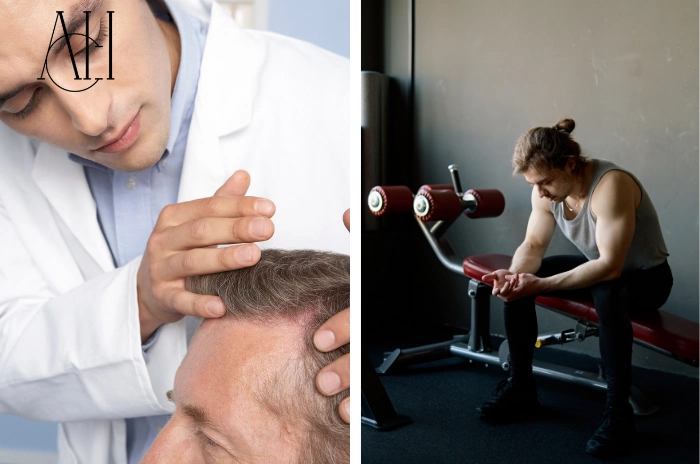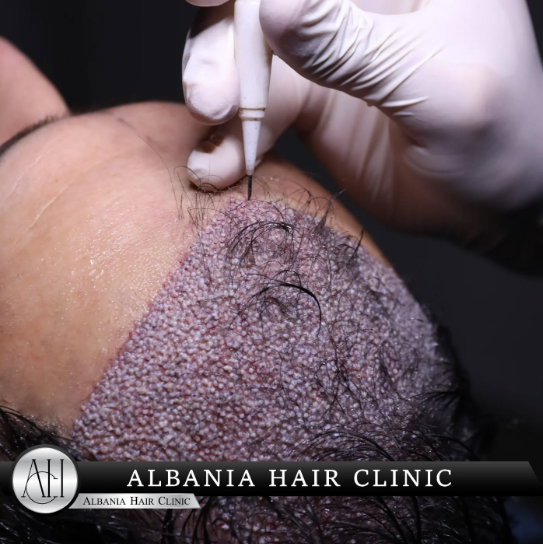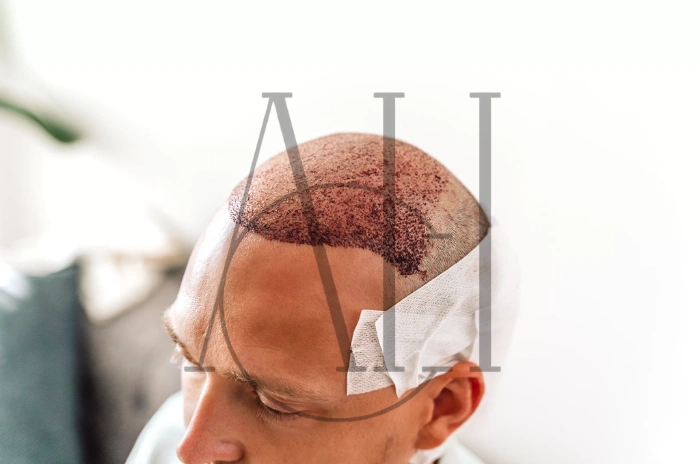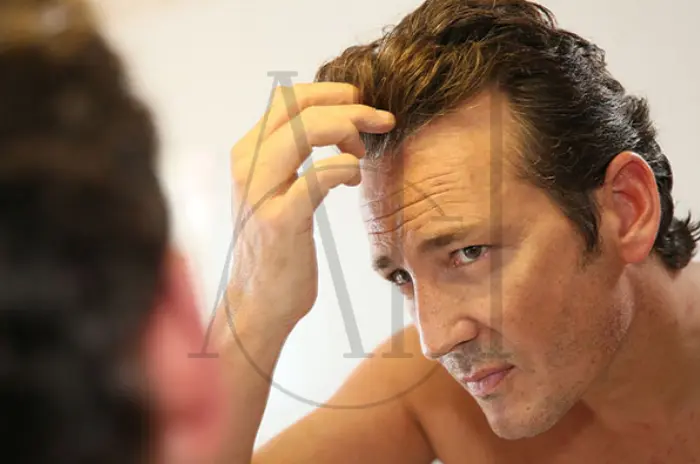After a hair transplant, it’s normal to want to return to your daily routine, including your workout schedule. However, it’s important to give your body and scalp enough time to heal. Physical activity can affect your recovery and the success of the transplant. This guide explains when and how to safely start exercising after a hair transplant, using expert advice and simple steps. Staying active is good for your health, but timing and type of exercise are key during recovery.
Table of Contents
ToggleWhy No Working Out After A Hair Transplant?
Risk of Sweating and Infection
Exercise makes you sweat, which can increase the risk of infection in the newly transplanted area. The scalp is very sensitive after surgery, and sweat may carry bacteria that can affect healing. This is especially risky in the first week when grafts are not yet fully secure.
Graft Damage Risk
Movements and increased blood pressure during exercise may affect the grafts before they are fully secure. This could lead to poor results or even cause some grafts to fall out. Sudden or intense movements can dislodge newly placed follicles, affecting overall density.
Swelling and Discomfort
Working out too soon can cause swelling and discomfort in the donor and recipient areas. It’s important to let your scalp rest and avoid putting pressure on it. Your comfort during recovery directly impacts how fast you heal.
When Can You Do Exercise After A Hair Transplant?
Wait at Least 7 Days
Most doctors recommend waiting 7 to 10 days before doing light exercise like walking. This gives the grafts time to settle and the scalp to heal. It also reduces the chance of irritation or trauma to the treated areas.
Light Movements First
Start with gentle movement and avoid anything that causes you to sweat heavily. Let your body guide you and increase activity slowly. Walking at a relaxed pace can help improve circulation without stressing your scalp.
When Can I Lift Weights After A Hair Transplant?
Wait 2–4 Weeks
Weightlifting increases blood pressure and muscle tension. It’s best to wait at least 2 to 4 weeks before lifting weights. Start with light weights and avoid straining. Heavier workouts can be reintroduced slowly over time.
Avoid Bending Over
Bending your head forward while lifting can increase pressure on the scalp. Use seated or supported positions instead and keep your head upright. Avoid positions where the head faces downward or is tightly wrapped with sweatbands.
Albania Hair Clinic – Trapianto Capelli in Albania (@albaniahairclinic)’in paylaştığı bir gönderi
When Can I Start Walking After A Hair Transplant?
After 3–5 Days
Walking is a safe and gentle exercise. You can begin slow, short walks around your home after 3 to 5 days. Avoid walking under the sun or in dusty areas. Gentle walks help improve mood and blood flow.
Don’t Walk Too Fast
Fast walking increases heart rate and sweating. Stick to a calm pace and stop if you feel tired or warm. Use shaded areas if walking outdoors to protect the scalp from heat and sun exposure.
When Can I Start Running After A Hair Transplant?
Wait 3–4 Weeks
Running causes sweating, vibration, and blood flow changes. Wait about 3 to 4 weeks before starting again. Always check with your doctor first. It’s important that your scabs are gone and the healing phase is stable.
Monitor Your Scalp
If you feel itching or pain in the scalp while running, it’s better to stop and wait a few more days before trying again. Never ignore discomfort—your body will tell you if it’s ready.
How Soon Can You Exercise After Hair Transplant Surgery?
General Timeline:
-
Days 1–3: No exercise
-
Days 4–7: Short walks only
-
Week 2: Light stretching or slow indoor cycling
-
Week 3–4: Jogging or light cardio
-
Week 4+: Return to full routine if your doctor approves
Follow Your Clinic’s Advice
Every case is different. Your doctor knows your healing status best. Always follow the advice given to you. Hair Transplant Clinics may provide specific timelines depending on your graft count and technique used.
When You Can Start Exercising Again
Based on Your Activity Type
Some activities are safer earlier than others:
-
Yoga and stretching: after 10–14 days
-
Swimming: after 3–4 weeks
-
High-intensity cardio: after 4–6 weeks
Consider Healing Stages
If your scalp is still red, itchy, or scabbed, it’s better to wait. These signs mean your skin is still healing. Rushing too soon can undo the benefits of the procedure.
After Hair Transplant, When Can I Resume Physical Training Or Exercise Regimen?
Gradual Return
Do not go back to full training immediately. Begin with light sessions and see how your body responds. Increase intensity step by step. Listen to how your body and scalp feel during and after each session.
Let the Grafts Heal
Hair grafts are delicate for the first few weeks. Giving them time to attach properly improves long-term results and avoids damage. A proper healing period helps the transplanted follicles stay healthy and active.

Running After FUE Hair Transplant
Wait Longer Than You Think
With FUE (Follicular Unit Extraction), running too early can affect the donor and recipient zones. Wait at least 3–4 weeks before jogging or running. This allows time for grafts to fully anchor and reduces risk of complications.
Protect the Scalp
Wear a light, breathable cap if running outdoors to protect from sun and dust. Avoid tight hats that touch the grafts. Look for caps with loose fits that do not put pressure on the scalp.
How Healing Affects Your Exercise Routine
Healing Comes First
In the first few weeks, your scalp is still recovering. Focus on rest, hydration, and nutrition. These help your grafts grow strong. Skipping proper recovery may reduce graft survival.
Signs of Progress
Once the scabs fall off and redness fades, you can think about returning to your normal fitness schedule. If in doubt, check with your doctor. Clear signs of healing mean your scalp can handle more activity.
The First 14 Days: Walk Before You Run
Low-Impact Is Key
During the first two weeks, low-impact activities like walking and stretching are your best choice. Avoid bending, sweating, or rubbing the scalp. Give your body the time it needs to build strength again.
Hydration and Sleep
Drink plenty of water and get enough rest. These help your body repair and boost your energy naturally. Your healing process is faster when your immune system is strong and rested.
What About Strength Training and Other Workouts?
Resume Slowly
You can begin light strength training after 3 to 4 weeks. Start with machines or exercises that don’t strain the head or neck. Increase weights gradually and rest between sets.
Avoid Intense Workouts
Wait at least 4–6 weeks for activities like CrossFit, HIIT, or boxing. These can put too much pressure on the healing scalp. Avoid jumping, heavy sweating, or head movement during this phase.
Can You Do Sports After A Hair Transplant?
Yes, But With Caution
Sports are allowed after recovery, but timing is important. Avoid contact sports like football or martial arts for at least 6–8 weeks. These activities risk direct impact to the head.
Protect the Transplant Area
Always wear proper head protection if your sport involves sun or potential impact. Keep your scalp safe from sweat and dirt. Use breathable materials that do not stick to the skin.
How Long Should I Wait Before Doing Sports And Exercise?
Summary Timeline
-
Week 1: No sports
-
Week 2: Walking, light activity
-
Week 3: Stretching, yoga
-
Week 4+: Jogging, light weights
-
Week 6+: Contact or intense sports
Be Patient
Waiting a few extra days can make a big difference. Your results depend on proper healing, so don’t rush back into your training. Taking things slow leads to better, longer-lasting results.

Exercising after a hair transplant is possible—but timing is everything. Listen to your body, follow your doctor’s advice, and start slow. By giving your scalp the care it needs, you’ll enjoy healthier grafts, better growth, and a faster return to your fitness goals. With the right balance between activity and rest, your transplant success will last for years to come.
Frequently Asked Questions
Why should I avoid exercise after a hair transplant?
Exercise increases sweating and blood pressure, which can harm new hair grafts and slow healing. It also raises the risk of infection if done too soon.
When can I go back to the gym after a hair transplant?
You can usually return to the gym after 3 to 4 weeks, starting with light workouts. Always follow your doctor’s advice before resuming full training.
Can I walk outside a few days after surgery?
Yes, gentle walking is usually safe after 3 to 5 days, but avoid direct sun, heat, and dusty areas to protect your healing scalp.
Is it safe to sweat after a hair transplant?
Heavy sweating is not recommended in the first 2 weeks after surgery. Sweat can irritate the scalp and slow down the healing process.
When can I do contact sports again?
You should wait at least 6 to 8 weeks before playing contact sports like football or boxing. These activities can damage grafts if done too early.




